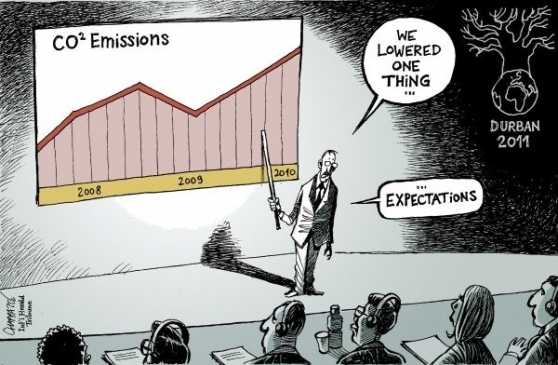Rio+20 Challenge
(1st Draft 102011).
Earth Summit 3 will be here soon. Preparations are accelerating. Outreach is continuing, positions are being formulated, expectations are being set. What will it accomplish? That is the million dollar question. Great expectations came out of ES 1, in Rio 1992, along with Agenda 21, Blueprint for a sustainable global future. That blueprint motivated an initial tidal wave of enthusiasm, hope, planning, and action into the late 1990s. ES2 in Johannesburg 2002, was fraught with lower expectations, a move towards bi-lateral agreements, and a suspension of the real urgency, denial, political backlash, focused mostly on the front lines of the larger sustainability challenge, catastrophic climate change from business as usual.
Subsequent path-breaking global scientific research, such as that of the IPCC in the mid-2000s, put the controversy over anthropogenic climate change to rest. The IPCC research confirmed the anthropogenic source of current climate change. Modelling revealed a certain future of catastrophic environmental and economic effects from a range of average temperature warming scenarios. The only chance of a future of reasonable climate change occurs if humanity collectively acts to limit average global warming to 1 degree C or less, the climate could restabilize at the relatively benign pre-industrial conditions after 100 or more years of increasingly harsh conditions, which themselves will cause substantial environmental and economic damage whose intensity will vary locally. This unlikely scenario requires that peak global CO2 emissions occur around 2017 and decline to zero by 2050. Deviations from reaching these targets will cause average temperatures to exceed the 1 degree mark, lengthen the readjustment period by decades, and potentially reduce the chances of restabilization of benign climate conditions.
With global population having doubled since 1950, reaching an unprecedented 7 billion by October 31, 2011, and forecast to increase by another 2 billion or 30 percent in 2050 over then next 40 years, and a globalizing economy that systematically increases pollution, environmental impacts, and destroys ecosystem resources and services, in short systematically reduces the biosphere's life support capacity, humanity faces an unprecedented historical challenge. That challenge is to redesign the human economy so that the systematic destruction of the planet's life support systems and capacity is reversed and transformed to have higher prosperity and expanding restorative environmental effects compared to the prosperity eliminating and environment destroying BAU scenario. Not only is this economic transformation required, but the productivity of the economy needs to increase many times to the point where the universal human needs of the total 9 billion of us on the planet are met. . . , for the first time in human history.
So, not only do we need to create a restorative economy, but dramatically increase its productivity. Such an impossible-appearing challenge would be tarred as unrealistic if the smartest business persons and businesses have not already found sustainability as the new business model of the 21st century. One of the key stalling points in society fully embracing sustainability arises from the predominance of eco-illiteracy among the educated population. As a result, the tremendous materials and energy inefficiency of our current economy, the one-way economy-crashing use of finite resources and energy, and the destruction of ecosystem resources and services for which there are no human economic substitutes is viewed as a viable business and life support model. This can only be maintained by an accounting system where the majority of real resource costs are off-book, a condition that severely over inflates revenue. The net result is that the entire economy, not simply one sector or commodity, is an economic bubble, based on spending future revenue that will never materialize. There is no better measure of our industrial bubble economy than our global eco footprint of 1.5, forecast to increase to 2 earths needed to meet our needs by 2050.
(to be continued.)
Thus, Earth Summit 2012 is a pivotal moment in human history. One requiring a shift in mental model to understand sustainability as the new business model for 21st century prosperity, and likely last frontier, only remaining basis and long wave of economic development, and final exam. A platform for the on-going innovation required to create sustainable prosperity. The key to this innovation process is using the ecological constraints of not interfering and destroying the living systems of the planet as the design parameters for redesigning economic products and processes to eliminate environmental impacts and simultaneously increase economic productivity and value. This process can be best facilitated using scientific sustainability conditions and principles of sustainability success as articulated in The Natural Step's Framework for Strategic Sustainable Development and plannign method. This combined with key strategies of dematerialization (doing more with less a la Buckminster Fuller, Amory Lovins, Factor 10, etc.) and the substitution (of nontoxic for toxic materials) combined with the four key strategies of natural capitalism (radical resource productivity, biomimicry and whole system redesign, shifting business models from producing things to producing the service the thing delivers, and reinvesting in natural capital used in current production).



